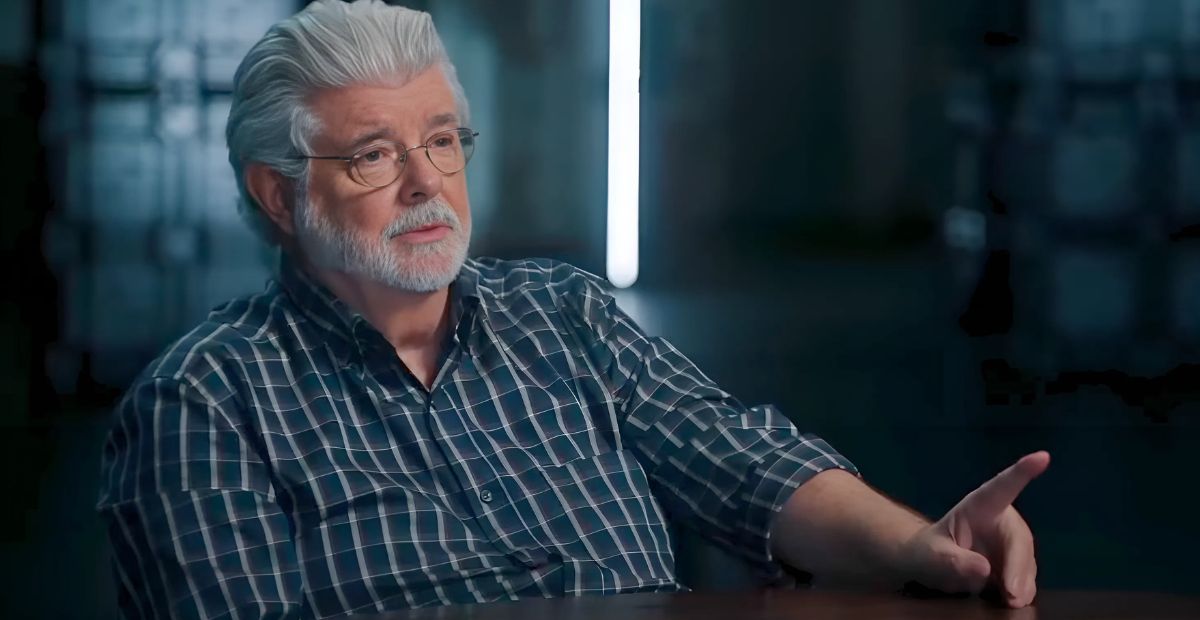The Redemption of Darth Vader and the return of Anakin Skywalker in Return of the Jedi is one of the most powerful moments in all of Star Wars, the perfect conclusion to the Skywalker saga. At the end, Anakin finally fulfills his destiny as the Chosen One. That’s how we as fans have always seen it.
But what about George Lucas, the man who created the story in the first place? For Lucas, Anakin’s final act wasn’t about erasing his crimes or undoing the pain he caused. It was about something far more human: love, compassion, and the willingness to sacrifice everything for his son. In The Making of Revenge of the Sith, Lucas explained exactly why Anakin’s redemption mattered — and how it tied back to the prophecy of the Chosen One.
Anakin’s Fall to the Dark Side Under George Lucas’s Vision
Before we get to Lucas’s explanation of Anakin’s redemption, it’s important to first understand how he envisioned Anakin’s downfall. That way, the redemption carries even more weight.
From reading The Making of Revenge of the Sith recently (which I highly recommend picking up if you haven’t — it’s full of incredible insights for Star Wars fans), I found Lucas very clear about what drags Anakin to the dark side: temptation and the inability to let go.
While filming the scene where Anakin speaks with Yoda in his quarters, Lucas explained that Anakin’s weakness was deeply human. As Lucas put it:
“No human can let go. It’s very hard. Ultimately, we do let go because it’s inevitable; you do die and you do lose your loved ones. But while you’re alive, you can’t be obsessed with holding on. As Yoda says in this one, ‘You must learn to let go of everything you’re afraid to let go of.’ Because holding on is in the same category and the precursor to greed. And that’s what a Sith is. A Sith is somebody that is absolutely obsessed with gaining more and more power—but for what?”

And we can see this play out all throughout the prequels. Anakin’s first great failure with attachment was his mother. He couldn’t accept her loss, and that grief drove him to slaughter an entire Tusken Raider village in revenge. Later, he fixated on the vision of Padmé’s death, convinced that the dark side was the only path to save her. In both cases, his inability to let go pulled him further away from the Jedi Code and deeper into Palpatine’s influence.
That’s what makes Lucas’s words so sharp. When he says, “A Sith is somebody that is absolutely obsessed with gaining more and more power—but for what?” it hits perfectly. Because when we step back and look at Anakin’s journey, his obsession with control and power never gave him what he wanted. He still lost the very people he tried to save. In the end, his fall wasn’t just tragic, it was meaningless.
Lucas continues in the book: “Nothing, except that it becomes an obsession to get more.” And that’s exactly the trap Anakin fell into. The power he sought didn’t save Shmi, it didn’t protect Padmé, and it didn’t bring him peace. All it did was fuel a cycle of destruction that left him broken, enslaved to Sidious, and further away from the things he loved than ever before.
George Lucas on Anakin’s Redemption and Return to the Light
As we’ve seen, Anakin’s downfall was rooted in his inability to “let go,” just like any human who struggles with loss. But in the end, George Lucas always intended for Anakin to be the one who would restore balance and bring peace—thanks to Luke Skywalker, the only person who could truly reach him.
Lucas explained it simply: “Children teach you compassion. They teach you to love unconditionally. Anakin can’t be redeemed for all the pain and suffering he’s caused. He doesn’t right the wrongs, but he stops the horror.”
As Lucas points out, Anakin’s redemption isn’t about erasing his crimes or magically undoing the galaxy’s suffering. It’s about the final choice he makes: to stop the cycle of destruction and protect his son. That act of compassion is what separates him from the Sith he had become.
Luke is the key here. Throughout Return of the Jedi, Vader is torn between his loyalty to Palpatine and his love for his son. Palpatine pushes him to embrace hatred, to watch Luke die and become stronger through rage. But Luke does the opposite—he refuses to kill his father and instead throws down his weapon. That moment of unconditional compassion mirrors what Lucas described: a child teaching the parent what it means to love selflessly.
As Lucas continues, he explains how Luke is the one who brings Anakin back to the light:
“The end of the saga is simply Anakin saying I care about this person, regardless of what it means to me. I will throw away everything that I have, everything that I’ve grown to love—primarily the Emperor—and throw away my life, to save this person. And I’m doing it because he has faith in me; he loves me despite all the horrible things I’ve done. I broke his mother’s heart, but he still cares about me, and I can’t let that die.”

That’s Lucas’s vision of Anakin’s redemption: not because Vader suddenly realized all of his sins, but because Luke’s belief—“there is still good in you”—was finally proven true.
In that choice, Anakin fulfills the prophecy of the Chosen One. Not because he was flawless, not because he “made up” for decades of horror, but because in the end, he destroyed the Sith and restored balance to the Force. His redemption was never about perfection—it was about one final act of love.

